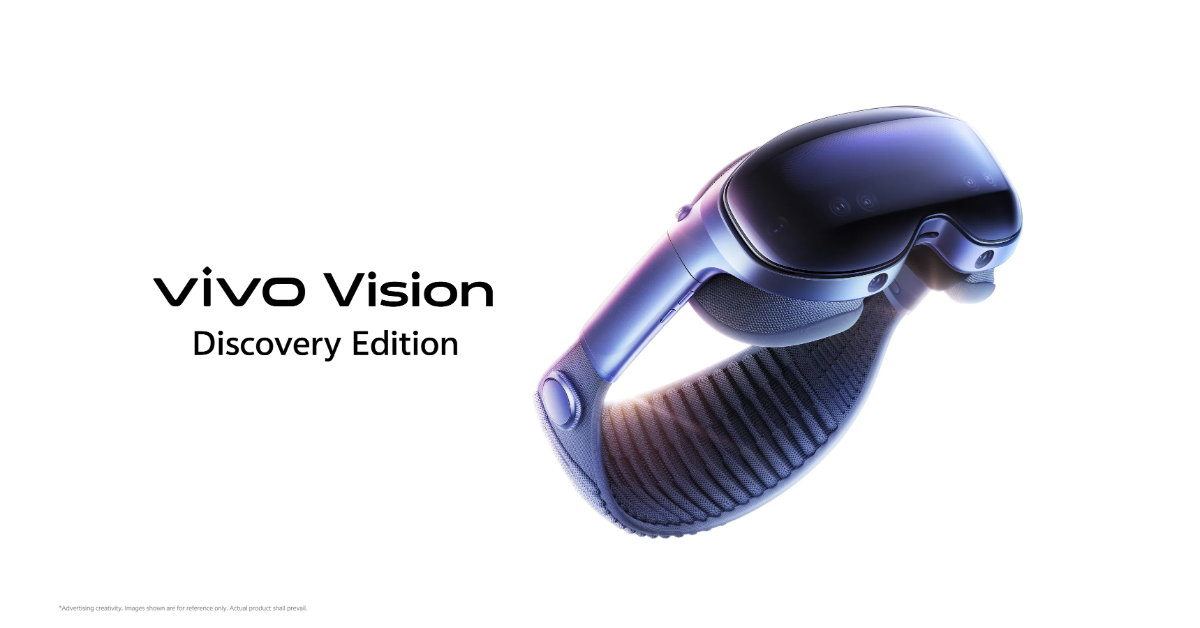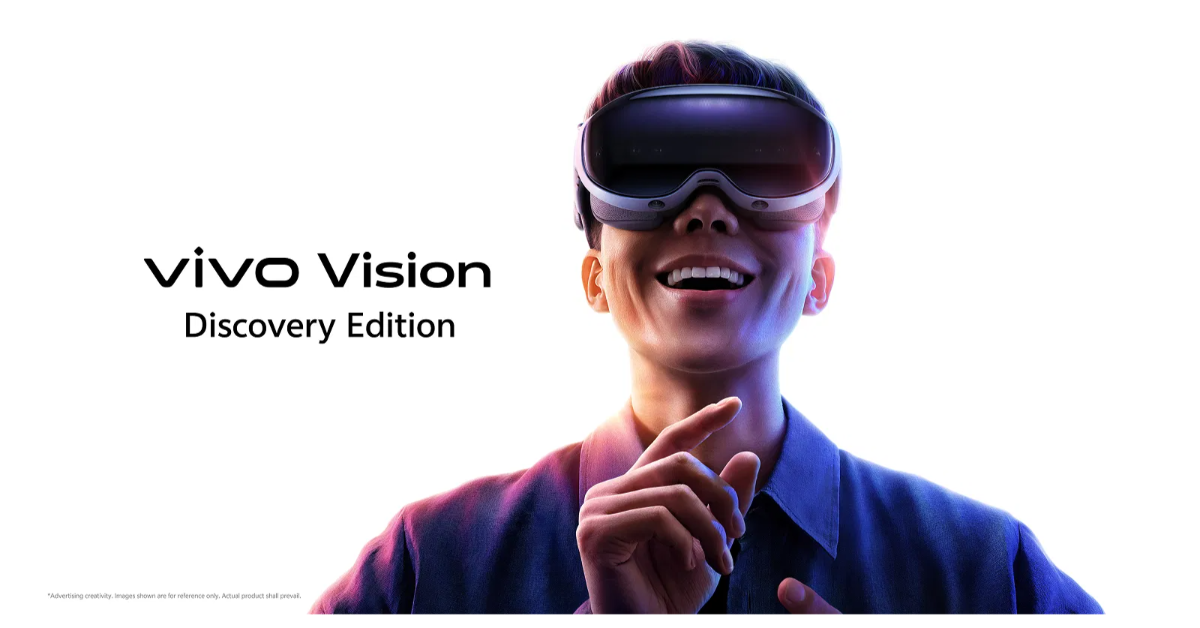Vivo Vision Explorer Edition, the company’s first mixed reality (MR) headset, debuted in China on Thursday. Positioned as a rival to the Apple Vision Pro, the gadget includes two 8K high-resolution Micro-OLED screens and is powered by Qualcomm’s Snapdragon XR2+ Gen 2 CPU. It runs on OriginOS Vision and has a big front visor and a cushioned back headband to keep the wearable in place. The Vivo Vision Explorer Edition allows for eye tracking and micro-gesture control.
Vivo launched the vivo Vision Discovery Edition, their first mixed reality (MR) headset, to commemorate their 30th anniversary. Vivo is the first Chinese firm to operate in both the smartphone and MR product sectors, as this is the first MR device created by a Chinese smartphone maker.
In addition to advancing the company’s long-term home robotics goal, the vivo Vision Discovery Edition seeks to mainstream mixed reality technology outside of the lab. With dimensions of 83 mm in height and 40 mm in thickness, it is lightweight and ergonomically optimised for everyday usage. It weighs 398g, which is 26% less than the industry norm for increased comfort. Eight foam cushioning options and four light seal sizes are included in the design.
By effortlessly displaying information in the surrounding environment, the vivo Vision Discovery Edition, which runs on OriginOS Vision, enables intuitive and natural user interactions. This makes it possible to switch to “move-and-pinch” gestures from traditional screen tapping. The device’s 175° vertical tracking range, 26 degrees of freedom for fingertip gesture recognition, and 1.5 degrees high-precision eye-tracking all help to make the controls snappy and easy to use. It uses Dual Micro-OLED panels, which provide images comparable to those seen in a movie theatre. These screens have 8K binocular resolution, 94% DCI-P3 colour coverage, and DeltaE<2 colour accuracy. In order to minimise discomfort caused by binocular visual disparities, binocular brightness and colour consistency have also been calibrated to achieve a binocular brightness difference of ≤ 2nits and a binocular chromaticity difference of ΔE < 2.
With up to 2.5x GPU and 8x AI performance over its predecessor, the vivo Vision Discovery Edition offers a notable performance boost thanks to its use of the Qualcomm Snapdragon XR2+ Gen 2 architecture. High-speed rendering for spatial computing is supported by this increased processing capacity, enabling more complex visual and interactive experiences. The purpose of the headgear is to engage people in virtual worlds for productivity, gaming, and entertainment. Its immersive video features enable split-screen or multi-angle panoramic watching of live sports and e-sports, and it can replicate a 120-foot theatre screen for a cinematic media experience.
Vivo is using innovative user experiences and in-house technologies to improve its imaging approach. Clear portrait details and low-light performance are provided by the VS1 pre-processing processor and V3+ imaging chip, which increase efficiency. Vivo has partnered with Sony (LYT-828) and Samsung (HP9) to produce a 200-megapixel sensor on a telephoto camera. These developments provide crisper images at high zoom when paired with large-model algorithms and Vivo’s AI Photo Enhance. For better 30x telephoto performance, future developments will concentrate on picture restoration, reconstruction, and next-generation big model upgrades.
Also Read: Apple Store India: Apple to open its next store in Bengaluru
Vivo introduces features in video such as AI Erase for Live Photo, Multi-Focal 4K Portrait Beautification, Live Photo Portrait, and Multi-Focal 4K 120 fps Slow Motion Video, demonstrating its strong end-to-end imaging capabilities to record dynamic, lifelike moments. In order to satisfy the many creative requirements of youthful users, Vivo will also provide its own AI-developed Customised Beautification and keep introducing video templates like Cool Tone Video Portrait.




